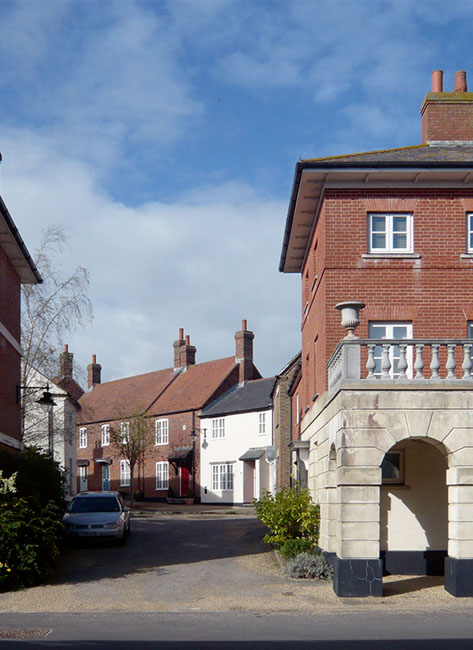Poundbury Dorchester
Leon Krier
Samenvatting
Vanaf de jaren 1980 van de vorige eeuw mengt de Britse kroonprins Charles zich opvallend en controversieel in het debat over stedenbouw en architectuur. Zijn uitgesproken, soms agressieve aanvallen op de erfenis van het modernisme en op nieuwbouwprojecten hebben veel stof doen opwaaien. Hij verwoordde zijn visie in 1989 in een BBC-documentaire en het boek A vision of Britain. Tegelijkertijd nam hij het initiatief om aan de westrand van de zuid-Engelse stad Dorchester een terrein, in eigendom van het hertogdom van Cornwall, volgens zijn eigen inzichten te ontwikkelen. Een traditionele architectuur en stedenbouw staan hier voorop, maar ook ideeën met betrekking tot participatie en ecologie spelen een rol in de uitgangspunten voor de ontwikkeling.
De prins vroeg Leon Krier een masterplan te maken voor het gebied, vernoemd naar de midden op de locatie gelegen boerderij Poundbury. Krier’s masterplan gaat uit van vier nieuwe wijken, e lk niet groter dan het historische centrum van Dorchester. Monumentale lanen scheiden de vier delen en leggen verbindingen met de bestaande stad; op strategische punten zijn voorzieningen opgenomen. Poundbury is geen zelfstandige New Town, maar door het maken van een nieuw centrum ook geen uitbreidingswijk. Krier zelf spreekt van een transformatie van Dorchester van een monocentrische naar een polycentrische stad, waardoor vooral het autoverkeer in de stad sterk gereduceerd zou worden. Krier vroeg Andres Duany bouwregels op te stellen. Krier had eerder meegewerkt aan Duany’s project voor Seaside in Florida. Onderdeel van dit veelbesproken voorbeeld van New Urbanism was Duany’s urban code, een matrix van gebouwtypen en voorbeelden als leidraad voor een gevarieerde en samenhangende architectonische uitwerking.
De eerste fase, Middle Farm Quarter, grenst direct aan een bestaande buitenwijk met de in Engeland zo gebruikelijke rijtjes en twee-onder-een-kap woningen. Het stratenpatroon van deze wijk wordt voortgezet, maar vervolgens getransformeerd in een schilderachtige aaneenschakeling van pleintjes, gebogen straten en hoven. Krier’s eerste tekeningen voor Middle Farm tonen een stedelijk beeld, een visioen van een Italiaanse stad, verdwaald in Dorset. De uiteindelijke uitwerking is veel dorpser, ogenschijnlijk meer lokaal geïnspireerd, en heeft een minder gemengd programma. De bebouwing bestaat grotendeels uit grondgebonden woningen, vrijstaand of in kleine rijtjes. Ze onderscheiden zich in plattegrond en schakeling nauwelijks van het gebruikelijke, maar vallen op door de eenvoudige, tegelijk zorgvuldige detaillering waarin elke verwijzing naar het heden zoveel mogelijk vermeden is.



